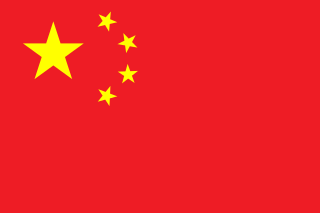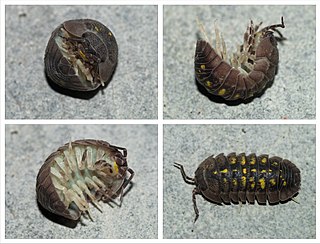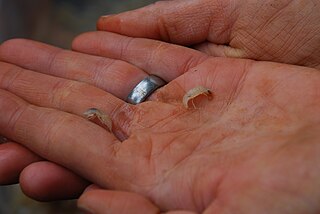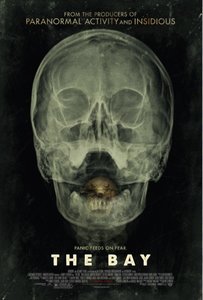
China, officially the People's Republic of China (PRC), is a country in East Asia. With a population exceeding 1.4 billion, it is the second-most populous country after India, representing 17.4% of the world population. China spans the equivalent of five time zones and borders fourteen countries by land. With an area of nearly 9.6 million square kilometers (3,700,000 sq mi), it is the third-largest country by total land area. The country is divided into 33 province-level divisions: 22 provinces, five autonomous regions, four municipalities, and two semi-autonomous special administrative regions. Beijing is the country's capital, while Shanghai is its most populous city by urban area and largest financial center.

Isopoda is an order of crustaceans. Members of this group are called isopods and include both aquatic species, and terrestrial species such as woodlice. All have rigid, segmented exoskeletons, two pairs of antennae, seven pairs of jointed limbs on the thorax, and five pairs of branching appendages on the abdomen that are used in respiration. Females brood their young in a pouch under their thorax called the marsupium.

The European water vole or northern water vole is a semi-aquatic rodent. It is often informally called the water rat, though it only superficially resembles a true rat. Water voles have rounder noses than rats, deep brown fur, chubby faces and short fuzzy ears; unlike rats their tails, paws and ears are covered with hair.

Armadillidiidae is a family of woodlice, a terrestrial crustacean group in the order Isopoda. Unlike members of some other woodlice families, members of this family can roll into a ball, an ability they share with the outwardly similar but unrelated pill millipedes and other animals. This ability gives woodlice in this family their common names of pill bugs or roly polies. Other common names include slaters, potato bugs, butchy boys, and doodle bugs. Most species are native to the Mediterranean Basin, while a few species have wider European distributions. The best-known species, Armadillidium vulgare, was introduced to New England in the early 19th century and has become widespread throughout North America.

Cymothoa exigua, or the tongue-eating louse, is a parasitic isopod of the family Cymothoidae. It enters a fish through the gills. The female attaches to the tongue, while the male attaches to the gill arches beneath and behind the female. Females are 8–29 mm (0.3–1.1 in) long and 4–14 mm (0.16–0.55 in) wide. Males are about 7.5–15 mm (0.3–0.6 in) long and 3–7 mm (0.12–0.28 in) wide. The parasite severs the blood vessels in the fish's tongue, causing the tongue to fall off. It then attaches itself to the remaining stub of tongue and the parasite itself effectively serves as the fish's new "tongue".
The hadal zone, also known as the hadopelagic zone, is the deepest region of the ocean, lying within oceanic trenches. The hadal zone ranges from around 6 to 11 km below sea level, and exists in long, narrow, topographic V-shaped depressions.

Silverwood Lake is a large reservoir in San Bernardino County, California, United States, located on the West Fork Mojave River, a tributary of the Mojave River in the San Bernardino Mountains. It was created in 1971 as part of the State Water Project by the construction of the Cedar Springs Dam as a forebay on the 444 mi (715 km) long California Aqueduct, and has a capacity of 73,000 acre⋅ft (90,000,000 m3).

Uropetala carovei is a giant dragonfly of the family Petaluridae, endemic to New Zealand. Its Māori name, kapokapowai means "water snatcher", alluding to the water dwelling juvenile stage (nymph), which, like all dragonflies, has a long extendable jaw that shoots out to snatch prey. It is also known as Carové's Giant Dragonfly.

Antrolana lira, also known as The Madison Cave isopod, is a freshwater, cave-dwelling crustacean species. It is in the family Cirolanidae and it is the only species of its genus Antrolana. This isopod can be found in flooded limestone caves and karst aquifers throughout the Great Appalachian Valley of Virginia and West Virginia. The Madison Cave isopod has been listed as a vulnerable species on the IUCN Red List since 1983 and as a threatened species under the United States Endangered Species Act since 1982. The species was named after the cave in which it was first discovered, Madison Saltpetre Cave. Very little is known about the life history and behavior of the Madison Cave isopod.
Echinodillo is a genus of woodlice in the family Armadillidae. It contains two species.
Sphaerolana is a genus of isopod crustaceans in the family Cirolanidae, all of which are endemic to Mexico.

Woodlice or roly-polies, are terrestrial isopods in the suborder Oniscidea. Their name is derived from being often found in old wood, and from louse, a parasitic insect, although woodlice are neither parasitic nor insects.

In zoology, deep-sea gigantism or abyssal gigantism is the tendency for species of deep-sea dwelling animals to be larger than their shallower-water relatives across a large taxonomic range. Proposed explanations for this type of gigantism include necessary adaptation to colder temperature, food scarcity, reduced predation pressure and increased dissolved oxygen concentrations in the deep sea. The harsh conditions and inhospitality of the underwater environment in general, as well as the inaccessibility of the abyssal zone for most human-made underwater vehicles, have hindered the study of this topic.

A giant isopod is any of the almost 20 species of large isopods in the genus Bathynomus. They are abundant in the cold, deep waters of the Atlantic, Pacific, and Indian Oceans. Bathynomus giganteus, the species upon which the generitype is based, is often considered the largest isopod in the world, though other comparably poorly known species of Bathynomus may reach a similar size. The giant isopods are noted for their resemblance to the much smaller common woodlouse, to which they are related.

Cirolanidae is a family of aquatic isopods.

Korrelocking is a small town situated between Wyalkatchem and Trayning in the Wheatbelt region of Western Australia. At the 2006 census, Korrelocking had a population of 76.

The Bay is a 2012 American mockumentary horror film directed by Barry Levinson and written by Michael Wallach, based on an original story created by the duo. It stars Kether Donohue, Nansi Aluka, Christopher Denham, Frank Deal, and Kristen Connolly and premiered at the 2012 Toronto International Film Festival. It was released in theaters on November 2, 2012. To date, it is Levinson's only horror film.

Excirolana is a genus of isopods in the family Cirolanidae. There are about 15 described species in Excirolana.

Trichorhina tomentosa, known informally as the dwarf white isopod, is a species of woodlouse in the family Platyarthridae. It is a parthenogenetic species, and only female individuals are known. Native to tropical regions throughout the Americas, dwarf white isopods have been introduced to other tropical regions worldwide.















